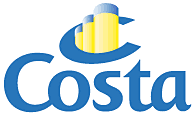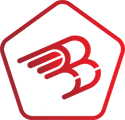Why it’s important to analyze the competitor’s SEO
Launching a website is, perhaps, one of the most difficult types of businesses to do well, so it can be particularly frustrating for an owner of an established website to see one’s competitor thriving in areas where he or she has yet to achieve success.
In these situations, analyzing a competitor’s search engine optimization (SEO) techniques is important. It is primarily through optimization analysis of a competitor that a website owner can remove the guesswork from the process of ranking high in search engine results and potentially improve sales or conversion rates. For example, a website owner might read a collection of optimization best-practice books, or he might attend some online business seminars, but in either case, he really does not know if the advice will work.
By contrast, if a website owner can identify how a competitor is already thriving, he or she no longer has to wonder what to do or how to do it. This is because website optimization analysis identifies the specific things a competitor is doing well, and if that competitor is thriving, a website owner need only to mirror those specific practices to expect similar success. In this scenario, there is no guesswork whatsoever.
Seven types of techniques to analyze
In SEO analysis, seven practices represent the core components to monitor and emulate. These SEO practices are: backlink inspection, meta tags, internal linking, image description, H tags, URL structure, and publication frequency. These components contribute differently toward creating a website that will catch a search engine’s attention.
7. Backlink
It is important to analyze websites by focusing on competitors’ backlinks for two reasons.
First, the types of these backlinks will identify the types of high-quality links search engines want to see linking to a site. The types of backlinks are important because two sites might have the same number of backlinks, but one site, the more successful of the two, will often have backlinks from more reputable sites.
The logic behind backlink quality follows something similar to the old adage “birds of a feather flock together,” which is to say if two quality sites link to a third, relatively unknown site, that third site is likely high quality. As such, that third site will rank higher in search results.
Once a website owner analyzes the types of links to a competitors site, he or she can then evaluate whether the types of sites linking to his or her own site are of equal quality.
Second, a backlink analysis will identify a competitor’s quantity of backlinks. This quantity is important information as it provides information on the number of required links in order to achieve high-ranking search results.
6. Meta Tags
Meta tags are labels considered to exist off screen or behind the scenes. Actually, meta tags exist on the same page as normal information, but HTML code does not display them to users. This is why they are considered behind-the-scenes. Search engines, however, see them instantly, and these meta tags identify the information purported to exist on the page. For instance, a page of medical text might contain 40,000 words, but the gist of the page can be captured with a word or two or a brief descriptor. This brief descriptor is included in the the meta tag section of the HTML code. A human visitor will not see it, but a search engine will.
In the hypothetical example of a 40,000-word medical text, the meta tag might simply be “cancer treatment for men over fifty.” Additionally, this hypothetical page might have multiple tags such as “brain cancer,” “cancer,” “experimental cancer treatment,” and “cancer centers in New York City.” Each tag represents a primary subject of focus within the text, and the search engine doesn’t need to scan the entire text to understand the subject matter. All it needs to do is browse the meta tags.
Analyzing a competitor’s meta tags helps a website owner know precisely what tags work for successful sites and what tags work less successfully.
5. Internal Links
Internal links are links within a website that lead to other pages or content items within that same website. Search engine spiders, as they are called, crawl content, but in order to access content, they need to be able to find it. They do this, in part, via links.
These internal links are often comprised of the primary or secondary menu system, but they can also be comprised of in-text links. Without efficient internal links, spiders will leave much of a website either un-crawled or uncategorized. Either of these results spells disaster for a website owner.
However, analyzing a successful competitor’s internal link methodology will allow that same structure to be easily applied on an under-performing website.
4. Images & Video
Much like text, images and video are classified as content. Unlike text, the specific type of content is held in the video rather than text, so meta tags become increasingly important. Additionally, titles, captions, and alternative text help search engines understand what an image or video depicts.
Of course, examining how successful sites describe their images and video will provide clues as to how another website owner should describe his or her own images and video. For instance, a website owner might simply describe an image of a cat as “cat playing with string.” Additionally, a website owner might describe a video of a bunch of kittens as “kittens having fun in basket.”
However, upon analyzing a competitor’s best practices, the website owner might find that the competitor is also incorporating keyword phrases into the description. Once a website owner understands how a competitor is classifying multi-media content, he or she can then copy those best practices.
3. H Tags
Search engines glean a website’s content through meta-tags, but search engines also scan the actual content. When they do this, they look at such things as the titles, headers, and sub-headers—all of which are laid out according to something called H tags.
For instance, an H3 tag represents a sub-header for a main category. This category can be one of many bullet point items, or it can be a subset of a larger category of topics. If coded correctly, H3 tags are sub-headers for H2 tags.
H2 tags represent main pieces of content. They might be a sub-header for an entire section or chapter. They represent important information that must be accurately classified in order to best communicate a website’s content to a search engine. H2 tags are sub-headers for H1 tags.
H1 tags are the most important headers or categories in a page of content, representing the primary subject of that content. H1 tags are reserved for main titles or primary headers, themselves, written as targeted keywords or keyword phrases. Because of their importance in conveying to search engines the nature of the site’s contents, H1 tags must be crafted with search engines and keywords in mind.
Of course, knowing how to do this can be accomplished by watching videos or reading books, but that leaves the success of the whole process in question. Analyzing a successful website’s practices leaves much less opportunity for getting it wrong and ending up with a website search engines ignore.
2. URL Structure
When it comes time to analyze websites, URL structure is, perhaps, the best “set-and-forget” component. URL structure is the naming convention used to guide people, and search engines, to a specific page on a website. Once a website owner decides on a URL structure, he or she can simply continue to always use that structure for all pages.
For people, the naming convention, among other things, should be easy to remember. For search engines, however, a successful naming convention should include keywords, have minimal mixed case, and use hyphens instead of underscores.
Because few people need to remember the exact structure of a URL, this formatting practice is important primarily to search engines. However, these three examples—keywords, mixed case, and hyphens—are only three of the possible methods a website owner can use to create a URL. In short, URL structure can be done in so many different ways, yet it provides no real content to paying customers. It is a rather complex technicality, so website owners should follow the advice of “do not fix what is not broken.” They should find out how other successful sites are naming their URLs and copy that technique. Search engines reward website owners who make crawling easy.
1. Publication Frequency
The last optimization technique, publication frequency, is not an actual practice, per se, but it is, perhaps, the most important aspect a website owner must get right. Publication frequency is otherwise known as fresh content. When it comes to search engines, fresh content, as they say, is king. Without fresh content, the even the best optimization practices will outlive their usefulness as the search engines begin to rank old sites as less relevant.
This is an important point to understand because even if a website owner copies a competitor’s website optimization techniques, if that website owner fails to upkeep the site with fresh content, all those optimization best practices–all that effort–will be wasted as the site is rated as irrelevant and ignored.
Although many leading competitor spy software programs crawl content and provide statistics on all the afore-mentioned optimization components, they can also provide data on publication date. Armed with this information, a website owner knows how often the content must be updated. By adhering to an ideal publication schedule, this last bit of research can help a website owner overtake and, perhaps, begin outperforming a competitor in search engine results.



